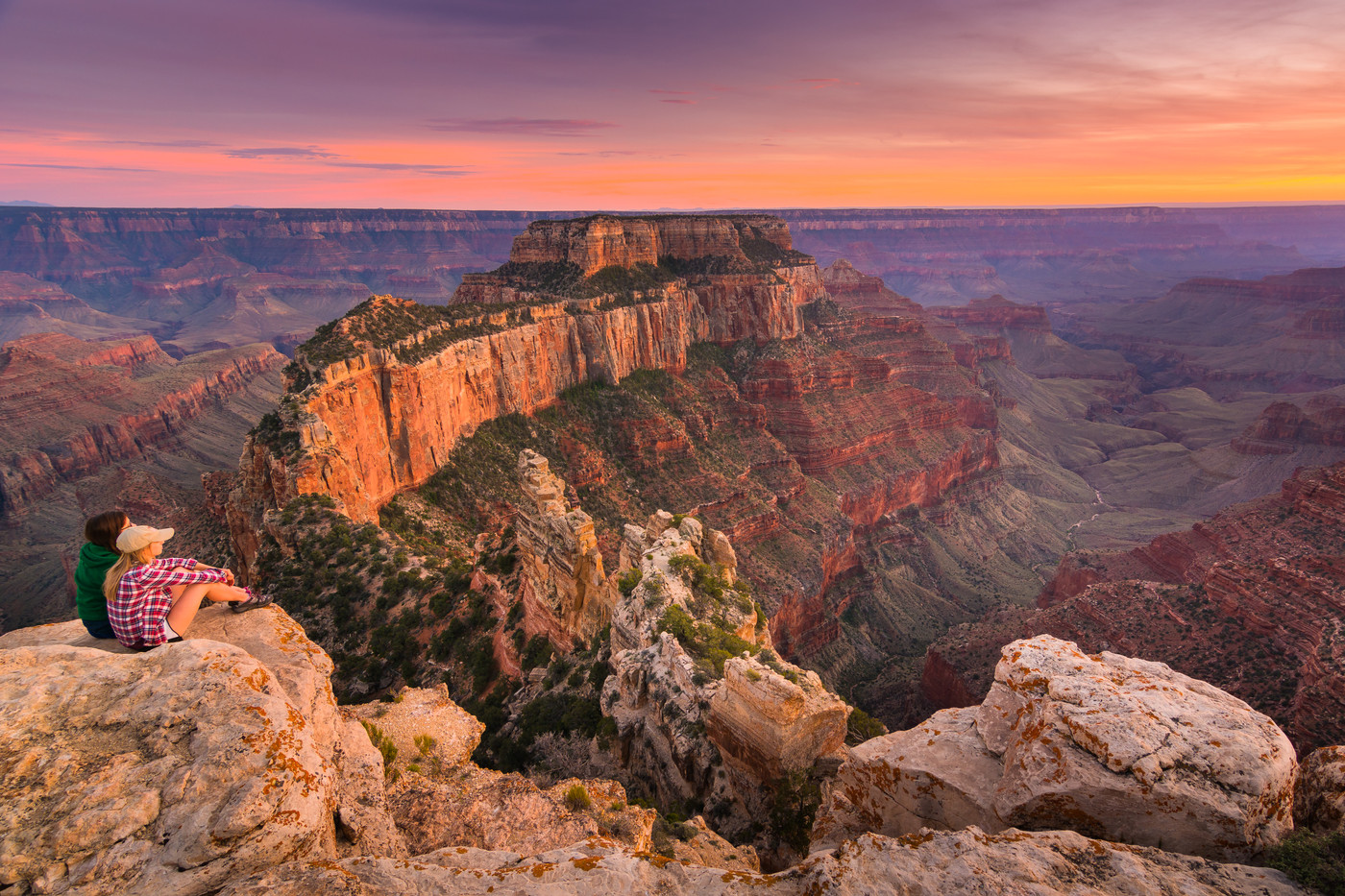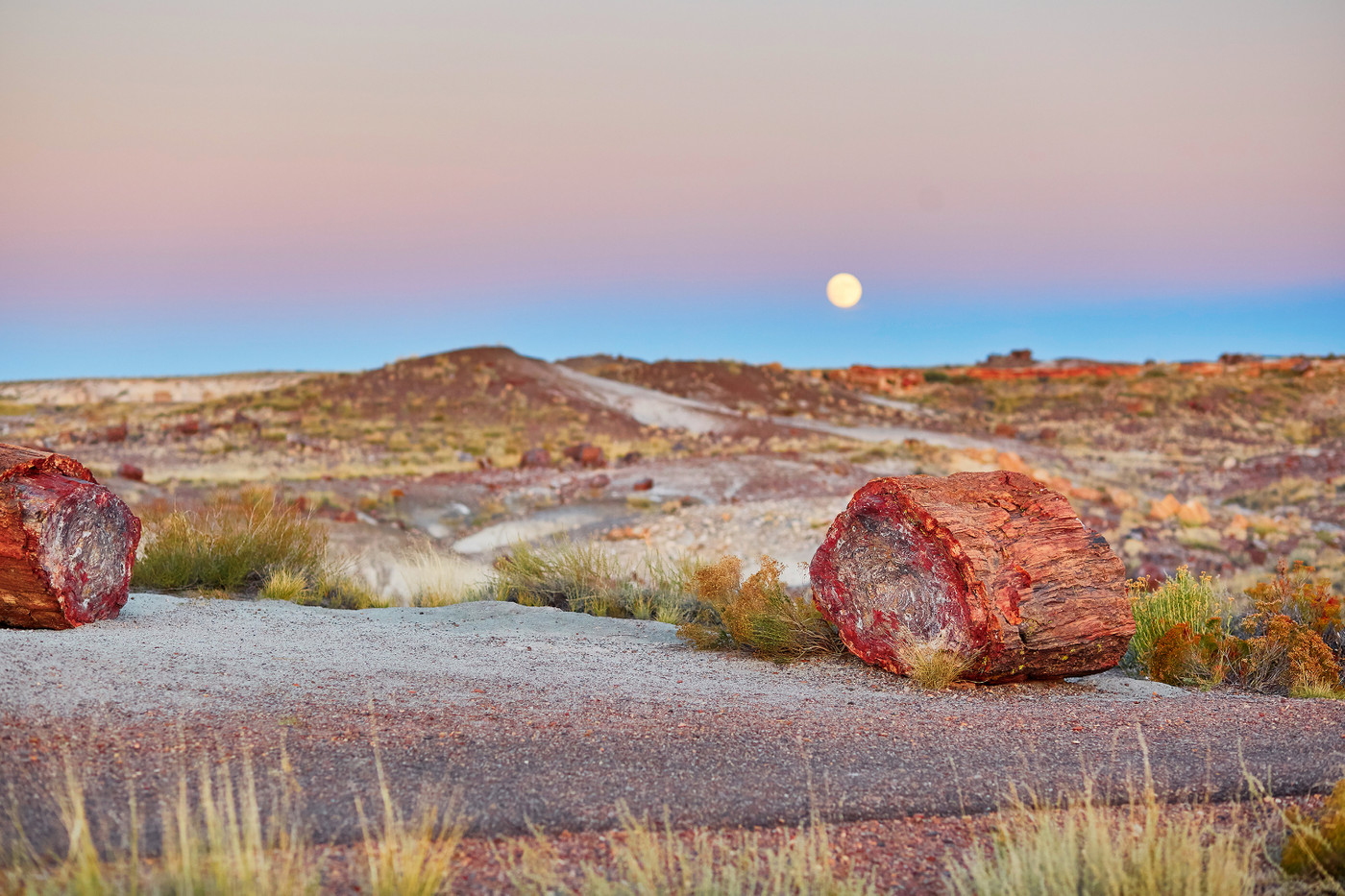Whether you’re on a US national park road trip or looking to spend some time diving-deep into the wonders of the Southwest, Arizona’s National Parks will give you a taste of the desert (with a twist).
Grand Canyon National Park lies about an hour and a half outside of Flagstaff, and is, of course, worth a standalone trip. They don’t call Arizona the “Grand Canyon State” for nothin. But only 180 miles to the southwest of the Canyon sits Petrified Forest National Park, with all its paleontology, petroglyphs, and vibrant badlands. And don’t forget Saguaro National Park, just outside of Tucson, filled with giant tree-like blossoming desert cacti. Let’s dive in.
Grand Canyon National Park

Arizona’s largest and most-visited national park holds the #1 spot on this list, and often tops park rankings across the nation— and the world. Literally! UNESCO named it a World Heritage Site in 1979.
The grandeur of the canyon, which was created by the incision of the Colorado River some 50 to 250 million years ago, is better seen in person than conveyed in text or pictures. In the words of conservationist president Theodore Roosevelt, “It is beyond comparison—beyond description.”
Grand Canyon National Park is made up of the north and south rims, the latter of which accounts for 90 percent of all park visits for its accessibility. The southern area of the park offers 35 miles of driving routes where you can look out over panoramic views, while the North Rim, 220 miles away, stands at a higher elevation of 8,000 feet, offers scenic stops like Point Imperial, Roosevelt Point, and Cape Royal.
Though there are several overlooks that you won’t want to miss, like the famous Skywalk which rises a dizzying 4,770 feet above the floor of the canyon, you’ll want to go much deeper than a simple drive through the park. You can spend days backpacking on guided or solo tours, maybe on a 10-mile, meandering route to Havasu Falls, or perhaps whitewater rafting through the heart of the canyon, or even taking a mule tour into the most remote parts of the park’s floor.
Petrified Forest National Park

There’s no better place to experience Arizona’s rich history than in Petrified Forest National Park. Throughout the park’s 221,390 acres are fascinating preservations of 225 million-year-old trees-turned colorful quartz stones. In addition to these natural wonders, Petrified Forest National Park is home to ancient pueblos, pit houses, petroglyphs, and pottery fossils that can be viewed from the car or on the trail.
Situated between modern day Navajo and Apache counties, the park contains remnants of human life from over 8,000 years ago. The sprawling ruins of Puerco Pueblo, an 800-year-old dwelling with around 100 rooms, are easily accessible by a quarter mile trail, while the Agate House, which was occupied around 1100 to 1150 CE, was actually made from the pieces of petrified wood that visitors can see around the park today.
Arizona’s Petrified Forest National Park is essential for history lovers and curious hikers alike. Its hieroglyphs and fossil collections will make you feel like you’ve stumbled onto a scene from an old western, complete with colorful desert badlands and a Painted Desert Inn built back in 1924. You can drive, bike, hike, or camp throughout the park’s 346 square miles, or you can take advantage of the National Park Service’s BYOH (bring your own horse) rules and southwestern ‘scapes and ride a pack animal through the backcountry.
Saguaro National Park

Arizona’s smallest national park is situated in the midst of the Sonoran Desert and is the only place in the world where you can find wild-growing saguaros. These tree-like cacti can grow up to 40 feet tall, live for anywhere between 150 and 200 years, and were the main reason why the park’s 92,000 acres of steppeland were designated a protected natural area in 1994. The presence of the saguaro creates a one-of-a-kind habitat, housing a complex ecosystem of cougars, bobcats, javelinas, gray foxes, jackrabbits, desert cottontails, ring-tailed cats, and white-nosed coatis.
Saguaro National Park is uniquely separated into two distinct sections: the Rincon Mountain District, which lies about 10 miles east of Tucson, and the Tucson Mountain District, 10 miles to the west. Each portion of the park features a different selection of flora and fauna, though from any viewpoint, visitors can marvel at the picture-perfect scenes of saguaros at the forefront of endless mountainsapes. Hikers and campers trekking through any of the 165 miles of trail systems can admire 800-year-old Hohokam petroglyphs, while drivers cruising Cactus Forest Loop Drive can stop to see quintessential southwestern panoramas.